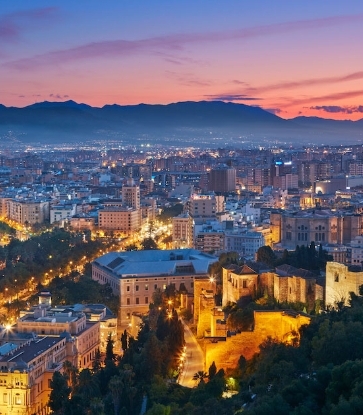Created to satisfy large appetites at small prices, pizza gained gastronomic celebrity status in 1889, when Chef Raffaele Esposito dedicated his version with oil, tomato, and mozzarella to Queen Margherita. The royal endorsement was the key to new waves of popularity, which throughout the 20th century would reach well beyond Italy's borders, making it one of the country's most iconic culinary creations. Over the years, it has become one of the most reinterpreted and hotly debated dishes in the world.
Pizza Napoletana
'Pizza Napoletana', better known in English as 'Neapolitan pizza', is so revered that it (or rather the production process and the people involved: master pizza maker, pizzaiolo, and baker) has been recognized by UNESCO for its Intangible Cultural Heritage. But what actually makes a pizza 'Neapolitan'? According to the specifications of the Verace Pizza Napoletana Association, the definition is reserved for two types of pizza: marinara (tomato, olive oil, oregano, and garlic) and margherita (tomato, olive oil, buffalo or fior di latte mozzarella, grated cheese, and basil), made with a dough using 0 or 00 flour. The diameter should not exceed 35cm, with a raised edge (the famous 'cornicione') of 1-2cm. Neapolitan pizza is soft to the point of being almost chewy, fluffy, and aerated.Pizza Romana, Pizza in Teglia, and Pinsa
Still round, but drier, crispier, and very thin is the 'pizza Romana' (or 'Roman pizza'), often prepared with a rolling pin. It is joined by another mouth-watering and more recent development in the pizza world: the 'pizza in teglia'. Exploding in popularity in the late 1980s and linked to the street food trend in Rome, pizza in teglia (literally translated as 'pan pizza') is rectangular and cooked on large baking trays rather than directly in a pizza oven. It is thicker than the classic Roman pizza, homogeneous (without a crust), and dry but crispy on its underside only. The difference also lies in the higher moisture content and longer fermentation of the dough.To complete our pizza overview, we finally add the 'pinsa romana'. Oval or rectangular in shape, it is crispy on the edges and soft on the inside, and is prepared using a dough made with different flours: wheat, soy, rice, and sourdough. The name is not a variation of the word pizza (which itself was perhaps derived from the Germanic word 'bizzo', meaning 'morsel' or 'piece of bread'), but instead comes from the Latin 'pinsere', meaning 'to spread out'.

A Thousand Pizzas
If we have somehow managed to summarize and describe the different types of pizza, on the toppings we admit defeat, because by now the creativity of pizza makers is unstoppable. Often, alongside the most classic pizzas (margherita, Napoletana, capricciosa, quattro stagioni...), we find seasonal and creative toppings, using ingredients passionately sought by pizzaioli such as marinated raw crustaceans, or three or four different types of rare tomatoes.Pizza remains, in any case, a fantastic, truly democratic gastronomic pleasure that in Rome and beyond you will not struggle to find, thanks to the abundance of excellent producers.
Top Roman Pizzerias
Bonci Pizzarium
43 Via della MeloriaThis restaurant from the 'Michelangelo of pizza' Gabriele Bonci is famous for its use of high-quality ingredients, as well as its creative flavor combinations and toppings. The pizza features a fluffy yet crispy dough, with flavors ranging from margherita to more imaginative variations.
Antico Forno Roscioli
34 Via dei ChiavariSince 1824, this place has been a true institution, offering exceptional pizza 'al taglio' ('by the slice'), made with a light and fragrant dough. The white pizza and red pizza are particularly popular, but there are also variations with mozzarella, vegetables, and high-quality cold cuts.
La Renella
Via del Moro 15This historic pizzeria in Trastevere dates back to 1870 and is famous for its long-rising dough and simple, wholesome ingredients. The pizza is crispy and flavorful, with a wide variety of toppings
Forno Campo de' Fiori
Campo de' Fiori 22Here is another historic operation, famous for its pizza by the slice with a thin, crispy base. The white pizza is particularly popular, but variations with tomato and mozzarella are also a must.
Trapizzino
88 Giovanni Branca StreetThis establishment offers a reinterpretation of the pizza al taglio concept, offering the 'trapizzino', a pizza triangle filled with delicious toppings such as chicken cacciatora and eggplant parmigiana.
Hero Image: Pizza romana/Michelin



















